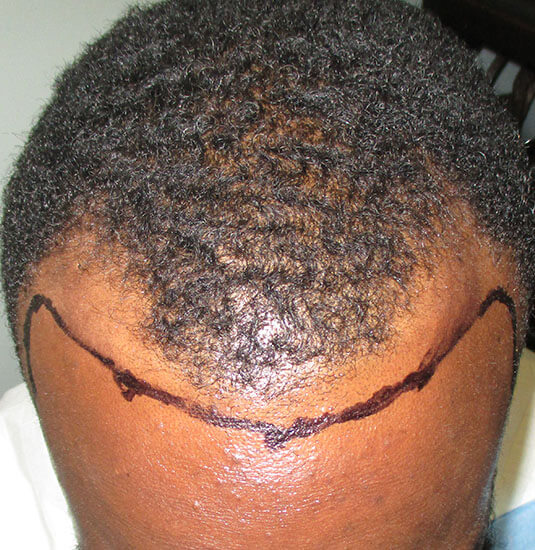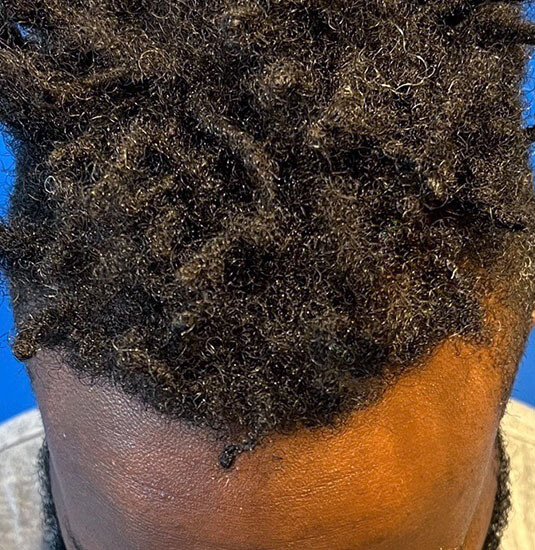
Medically reviewed by Dr. John Rosdeutscher – Written by Sine Thieme
If you are suffering from hair loss, a hair transplant is one of your best options to regrow a full head of natural hair. However, if you have African-American hair, you may wonder if a hair transplant will work for you or whether you’ll be wasting your money. The answer is yes: African-American patients can and do have very effective hair transplants – if performed the right way. At Nashville Hair Doctor (with locations in Nashville, Memphis, and Louisville) we have treated many African-American patients and achieved excellent results.
African-American patients can and do have very effective hair transplants – if performed the right way.
There are distinct differences between the different types of ethnic hair, and it is important for your hair technician to understand these differences and to have experience in working with its challenges and benefits.
The below African-American patient experienced a severely receding hairline in his early twenties and had a hair transplant at Nashville Hair Doctor in 2018:
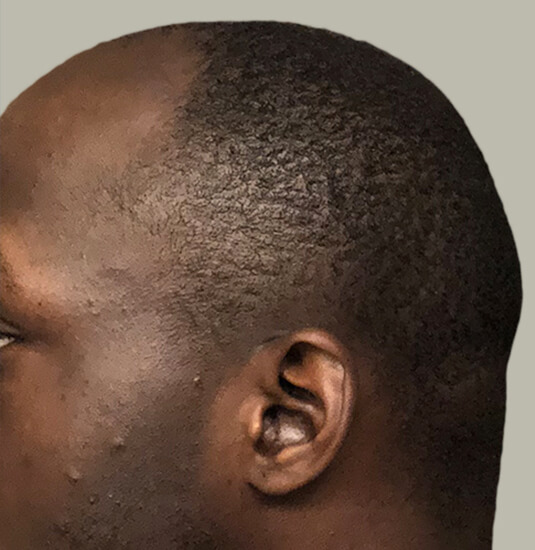
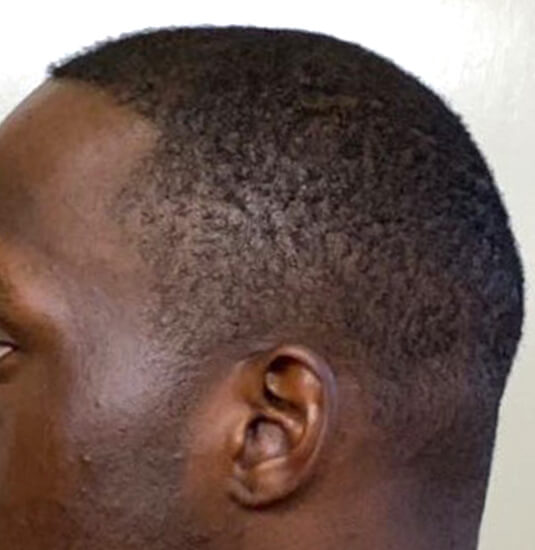
Causes of Hair Loss for African vs Caucasian Hair
Caucasians are the ethnic group most affected by hair loss compared to Africans and Asians. Male-pattern baldness (androgenic alopecia), which is the most typical form of hair loss among men, is most commonly seen in Caucasians.
However, so-called Traction Alopecia is most commonly seen in African American hair. It is a type of self-inflicted hair loss resulting from forceful pulling on the scalp over long periods of time. Such pulling can be caused by hair weaves, extensions, corn rows, and other forms of tight braids more commonly favored by African-Americans.
Hair Types Based on Ethnicity
For the purposes of medical hair restoration, human hair can be divided into three broad ethnic groupings: Asian, White, and African hair. Each grouping has distinct characteristics with respect to density, diameter, shape, and growth pattern.
Broadly, White hair hast the highest density and African the lowest, with Asian somewhere in the middle. The fastest growth pattern belongs to Asian hair, and the slowest to African, with White somewhere in the middle.
As you can see, African hair poses immediate challenges for hair transplantation, given that it has the lowest density and slowest growth. This might come as a surprise, because African hair typically looks very thick. This is due to its curly nature. Each hair follicle is actually quite thin, but the tight coiling of each follicle gives the appearance of dense coverage. As we will see below, this is actually also an advantage for the hair transplant process.
Challenges for African-American Hair Transplantation
One of the biggest challenges in transplanting African-American hair is the curly nature of the hair follicles. The curls do not stop at the scalp but extend into the root of each hair, meaning it is harder to harvest from the scalp without damaging the root. Also, African hair follicles are typically surrounded by a thicker and tighter layer of epidermis (skin) compared to other ethnic groups.
During the Follicular Unit Extraction method favored today, the technician needs to ensure he or she removes all of the root of the hair, or the follicle may become damaged or ruptured. This might result in a high transection rate (failure to take root) for the transplanted hair and yield unsatisfactory results.
Another challenge to watch out for in African-American hair is the possibility of keloid scarring on the scalp as the punch marks from the extraction heal . Keloids are raised benign growths of skin caused by extra production of collagen during healing. In the United States, keloids are more common in African-Americans, Hispanic Americans, and generally people with darker skin. They also run in families.
To overcome these challenges, it is important to choose a hair clinic or master technician who is experienced in transplanting African-American hair. Make sure you ask for cases of previous patients of the practice with similar hair as yours, and to see their before and after pictures.
When comparing before and after pictures, it is helpful to see not only the before and after comparison, but also the outline of what was planned by the technician vs what ultimately resulted form the procedure. That way you’ll know whether a provider overpromises or delivers exactly what was discussed:
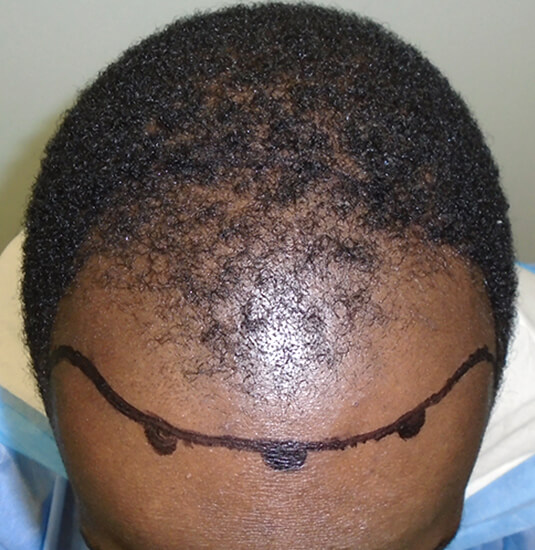
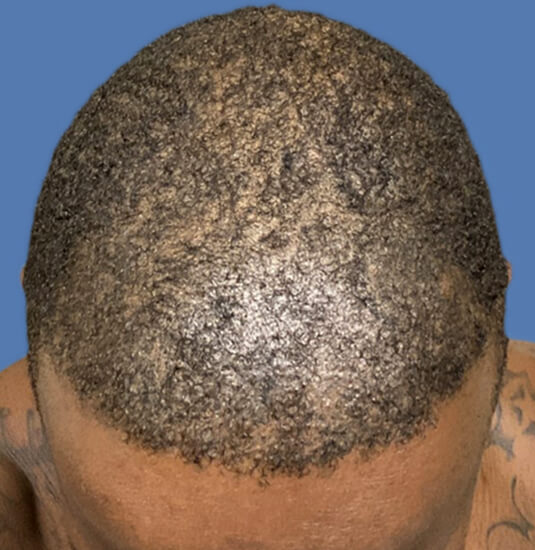
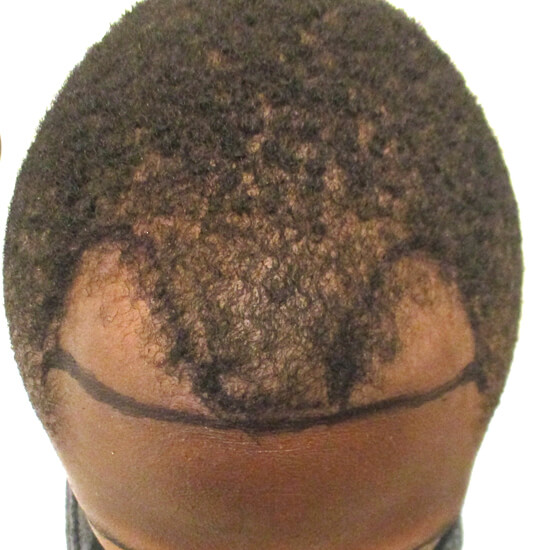
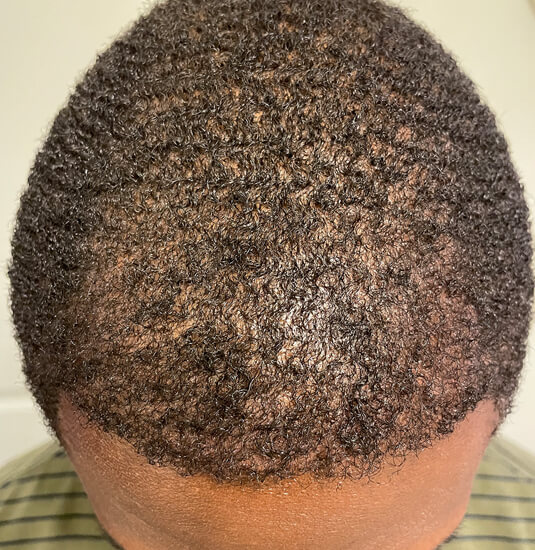
Benefits of African-American Hair for Transplantation
The typically lower density of African hair means that there is overall less hair available to extract for transplantation. But even though this could be viewed as a challenge, it also means that less hair is needed for coverage in the recipient area. The surgeon or technician can cover a larger area of scalp with fewer follicular units in an African-American patient than a typical White or Asian patient.
In addition, the lower color contrast between scalp and hair typically found in African-Americans means that the transplanted areas will blend much better, with less skin shining through. And lastly, African-Americans tend to favor a straight or only slightly curved hairline, which is much easier to craft so that it looks natural.
The following pictures shows a hairline typical for African-American hair restoration. This Memphis Hair Doctor patient wanted his hairline lowered by “a finger’s width,” which may not be much, but the difference is noticeable, both in lowering the airline and in straightening it out.
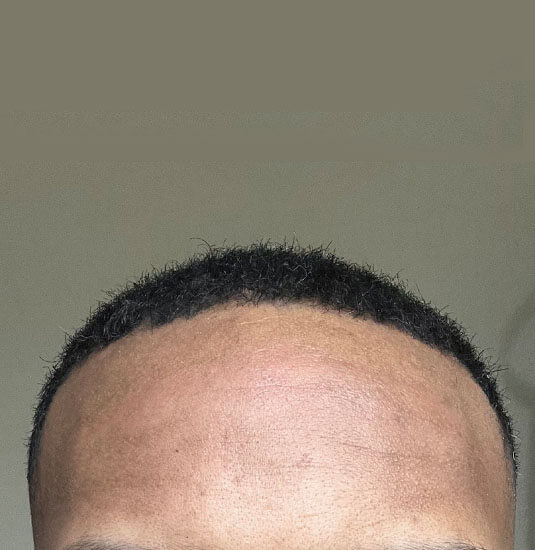
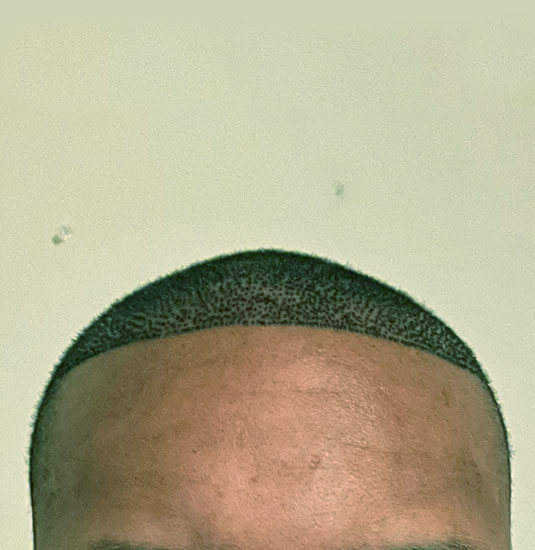
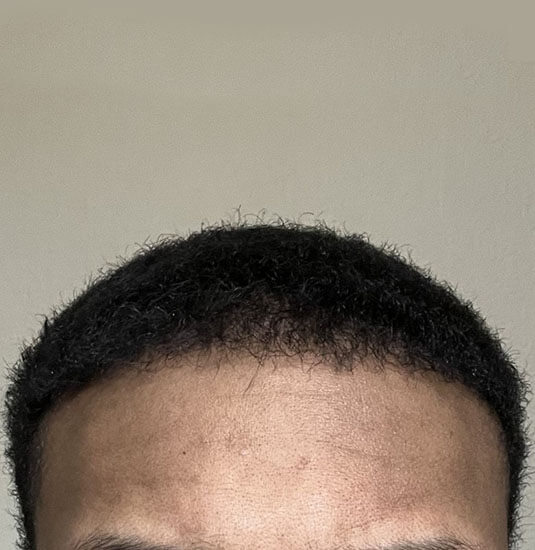
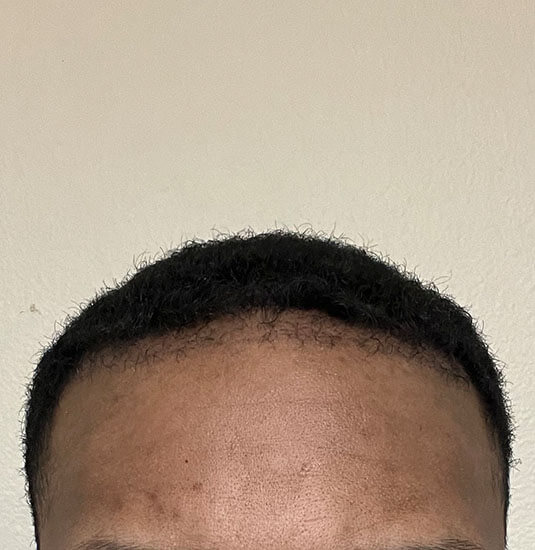
Is FUE or FUT Better for African-American Hair?
Even though the extraction of African hair is challenging, Follicular Unit Extraction – whereby each hair graft is extracted in groupings of 1-4 follicles – is the preferred method of hair transplantation for African-American patients.
Yes, removing an entire strip of scalp is somewhat easier, but the later dissection into follicular units still requires the steady hand of an experienced and skilled technician. The biggest argument against the strip method of hair removal, however, is the resulting linear scar in the back of the head. Such a scar can pose problems for anyone, but particularly for people who prefer close-cropped hairstyles – such as many African-Americans.
Patients who want to wear their hair short in the back should try to avoid the FUT aka Strip method.
Recovery from a Hair Transplant
Regardless of your hair type and/or ethnicity, the recovery from a hair transplant is the same for all patients. Your plastic surgeon or hair transplant technician will give you a list of Do’s and Don’t’s for the days immediately following your procedure, as well as detailed instructions on how and when to wash your hair, how to sleep, and when and how to safely expose your scalp to sunshine or wear tighter fitting hats.
Learn more about the growth cycles after a hair transplant>>.
